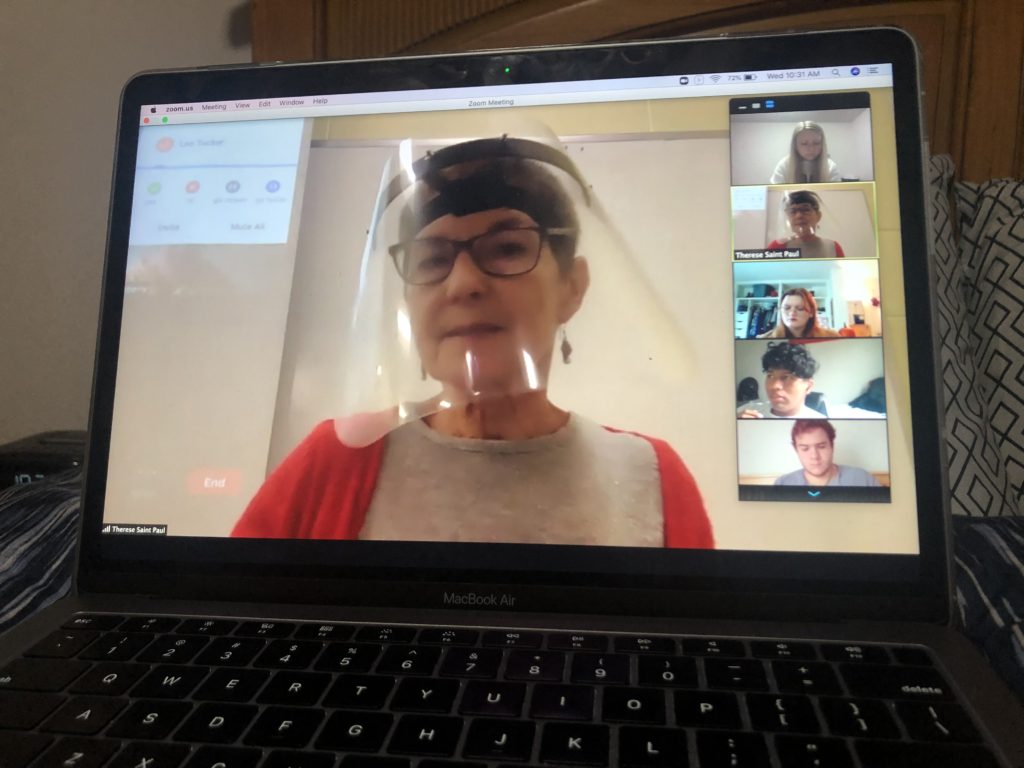Ben Overby
Contributing Writer
boverby2@murraystate.edu
Professors are adapting to new teaching circumstances alongside students who are learning in a new environment.
Kevin Qualls, associate professor of television production, transitioned to teaching his four courses completely via Zoom. Qualls believes online learning can be as effective as in-person learning. However, he said he feels that effectiveness varies from person to person, as certain ways of teaching and learning best suit certain people.
“I think we have to recognize that there are different methods,” Qualls said. “Some of those are more comfortable for some professors than others. I’m sure the same is true for students.”
Qualls said he enjoys being able to see students and building the culture that having everyone together in a classroom provides. While the COVID-19 pandemic makes this difficult, he has found an upside to meeting over Zoom.
“Every student has a front row seat, unlike the regular classroom where there will be a student who is behind someone else or three rows back,” Qualls said.
Even when the COVID-19 pandemic is over, Qualls would like to continue inviting guest speakers to visit his classes over Zoom.
“I have contacts all over the country that aren’t available to walk into my classroom,” Qualls said. “I can meet with them on Zoom, record that, and give my students access to someone they wouldn’t have access to otherwise.”
One adjustment Qualls has made since he started teaching over Zoom is his set-up. He began teaching while sitting at a desk, but realized he was missing some of the energy he had from standing while he taught in a normal classroom. His new set-up is a music stand and a microphone, which allows him to stand while he teaches.
Matthew Williams, physics and astronomy instructor, uses a hybrid method to teach his courses. Some students attend class in-person while others meet over Zoom. However, Williams said this leads to some uncertainty while teaching.
“One of the big problems is that I have no idea whether students are engaged,” Williams said. “With the Zoom students I am sort of working under the assumption that they’re engaging, but I have no idea if they’re even behind their screens listening to me.”
Williams said not having students in the classroom removes some of the cues he can normally pick up on as a professor.
“In a normal semester I can tell when students get disengaged,” Williams said. “I can see people glancing at their phone and at least know when I’m losing them so I can tell an interesting story and re-engage them. With Zoom, I try to give them the opportunity to engage the same way, but I doubt that it’s the same experience.”
Though, Williams said there has been a silver lining to hybrid classes.
“With hybrid teaching, I’ve learned new skills, like using Zoom, that I will probably use in a limited way even when we return to normal teaching,” Williams said.
One example he gave was projecting notes written on an iPad rather than writing on a whiteboard.
Williams said he thinks one form of learning where he believes students are missing out is labs. He is disappointed that all labs have to be virtual, but said there is no plausible solution right now.
Therese Saint Paul, associate professor of French, is able to teach her smaller, advanced classes completely in-person. Her larger classes are hybrids, with students divided into two groups. Both groups are assigned certain days they attend class over Zoom and days they attend in-person. Saint Paul believes having as much in-person contact as can be done safely is crucial for her classes.
“I think in-person contact is very important for any kind of teaching, but especially when teaching a language,” Saint Paul said. “That’s why I teach with a face shield. How can you teach a language if they don’t see your lips articulating? Especially when you’re dealing with languages where position of mouth is important.”
Saint Paul said adding the Zoom aspect of the class brings along a lot of issues between technical difficulties such as a poor wifi connection or students trying to join class late while she is already teaching and background noise or disruptive roommates. Saint Paul believes these factors make the learning process less equal for students.
However, Saint Paul said there is one aspect of teaching where Zoom can be an improvement.
“If students are at home, they are more relaxed,” Saint Paul said. “I can hear them, I can see how they pronounce and I can target their needs. Possibly, I can take time to do it even better than when they are in class.”
The common sentiment among professors is everyone is doing their best to make the most out of an unprecedented situation. Professors are learning, along with students, how to adjust to the “new normal” created by COVID-19.


























































































